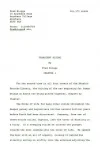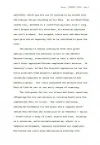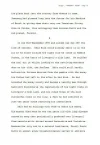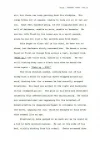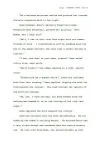1. Use A4 20lb good, white paper - about 80gsm.
2. Font: Courier or Courier New, size 12 in black only.
3. Double line spacing.
4. No Italics, italics intended: signify by underlining only.
5. Cover page: as in screenshot - Below.
6. After each period used - a full stop i.e. ( . ) Use a double space.
7. New paragraph start, set indent on top ruler in to five spaces.
8. No page number on cover page. Start in MS Word, as new page nothing in Header.
9. Each page after in header should read - Surname/Title/page Nr. formatted to right in header.
10. After each chapter page, all pages must have 25 double spaced lines.
11. Chapter pages work well with 12 lines double spaced.
12. Do not use blank spaces between text, use a hash ( # ) to denote period changes etc.
13. 3cm margins top, sides and bottom.
14. Juggle with your header and footer areas to get your 25 double spaced lines per full page.
15. The typesetter at publisher/Literary agency level will calculate each page as having 250 words, times that by the amount of pages, 150
words per chapter page to round the total words in your manuscript. Do not use MS Word count in the figures you give on your cover page.
16. Narration and speech lines are also indented five spaces in as with new paragraphs.
17. Have your manuscript gone over by a proofer/reader. It is well worth the cost -- haggle for a good deal --- to find typos, bad grammar and spelling mistakes.
18. At the end of your story, you can put, ( # # # # # ) or, <<<<>>>> to show it is the end.
I have always written in copy edit book format, just like you see in a book on a bookshop shelf -- and shock -- I have just finished 562 pages
of my novel, Transient Rising, 161.000 words in all, converting it into manuscript format - as defined above, which is how literary agents
and publishers want it in the first instance -- so much hard work -- I can tell you! However, all my next novels will be done in manuscript format
as I write them -- lessons learnt -- I hear you all say.
Self-publishing, vanity-subsidy publishing and POD (Print On Demand), is quite expensive. I believe in my book enough to press on with finding an agent to handle it because it has the impact required.
If the project is not proofread for all the obvious mistakes, and is therefore riddled with slander, libelous, defamatory and blasphemous statements, then it's off to jail one goes! Plus, in the UK, an author must have their book legally deposited before it can go out for public consumption.
Legal Deposit in the British Library Warning!
Publishers and distributors in the United Kingdom and the Republic of Ireland on or off-line have a legal obligation to send one copy of each of their publications to the Legal Deposit Office of the British Library within one month of publication. Here are their details:
The British Library
Legal Deposit Office
Boston Spa
Wetherby
West Yorkshire
LS23 7BY
Tel: +44 (0)1937 546268 (books) / 546267 (serials)
Fax: +44 (0)1937-546176
Email: (e-mail address removed)
Email: (e-mail address removed)
Self publishing is better with a Publisher's Prefix giving 10 (ten) ISBN numbers for better public and book-business sourcing, which you can apply for from a Bibliographic office in London, by supplying an inside cover page of your book, inclusive of title, copyright name, publisher name and when published.
I hope the above is of use to anyone on site. I wish you all every success in your future endeavours.
Below are some page examples of a typical manuscript format afore mentioned.
Billy.
